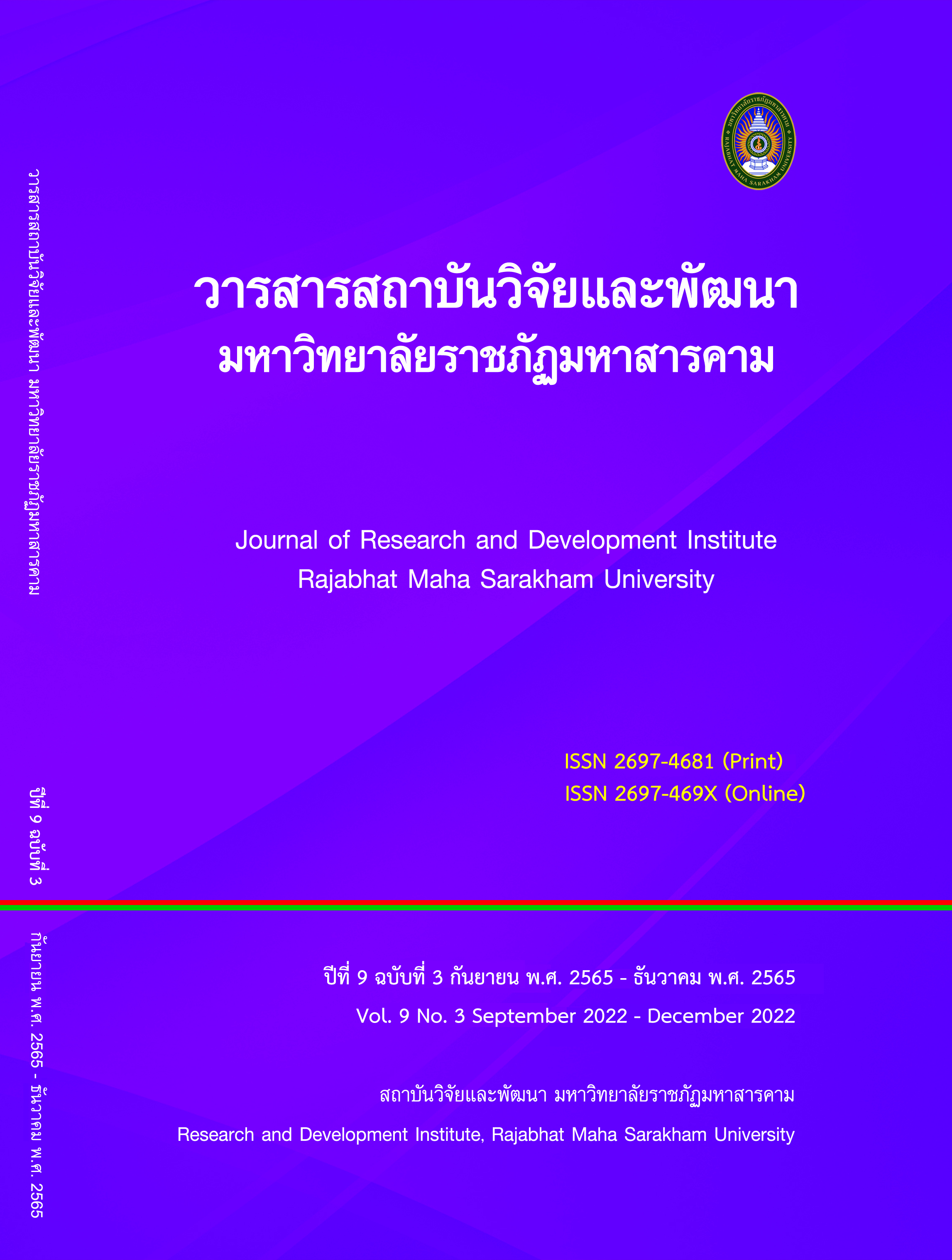Problems in the use of information technology in education DLTV of the Child Development Center under the local government organization Sisaket Province
Keywords:
Educational Information Technology Use, DLTV, Educational AdministrationAbstract
This research aimed to study and compare the Problems in the use of information technology in education DLTV of the Child Development Center under the local government organization Sisaket Province, Classified by status, educational background and work experience The sample group consisted of 302 people. Research instruments. It was a questionnaire with an IOC value between 0.80 - 1.00 with reliability of 0.88. The basic statistics used to analyze the data were frequency, percentage, mean, standard deviation, and the statistics used for hypothesis testing were t-test, f-test, and the double-mean test by the Mulitple Comparison Procedure. with Scheffe' Method
Research results
- Opinions of personnel on the problem of using information technology in education DLTV of the Child Development Center under the local government organization Sisaket Province Overall, all items were at a high level.
2. Opinions of personnel on the problem of using information technology in education DLTV of the Child Development Center under the local government organization Sisaket Province classified by status Overall and each aspect is no different. Classified by educational background overall different and different aspects in terms of learner quality and teaching management Classified by work experience Overall and each aspect was no different.
References
Distance Education Foundation through Satellite. (2019). Guidelines for teaching and learning management by using distance education via satellite (DLTV) to meet standards. Bangkok : Distance Education Foundation through Satellite under the royal patronage and the Office of the Commission basic education
Duangkaew, T. (2015). Factors of school administrators affecting the quality of distance learning via satellite in educational institutions. Under the Office of Suphanburi Primary Educational Service Area, Region 1. Bangkok: Sukhothai Thammathirat Open University.
Manim, Y. (2016). Guidelines for the implementation of distance learning via satellite of schools under the Nakhon Sawan Primary Educational Service Area Office, Region 2. Nakhon Sawan : Nakhon Sawan Rajabhat University.
Naiwirat, A. (1998) A presentation of teaching and learning model for destination schools in the general education project by satellite system. Bangkok : Chulalongkorn University.
National Science Technology and Innovation Policy Office. (2012). Policy Framework for Nanotechnology Development in Thailand 2012 – 2021. Bangkok: National Science Technology and Innovation Policy Office.
Wanichanan, P. (2020) Basic education in the era of COVID-19: how to open and close schools. [Online]. https://tdri.or.th/2020/05/basic-education-in-covid-19-crisis-reopening-school-after-lockdown/. [23 April 2021]
Watcharobol, L. (2010) The development of distance teaching model in Buddhism subject by integrating 4 MAT learning activities and the theory of instilling habits to develop ethical reasoning of Mathayomsuksa 3 students in the district. Bangkok. Bangkok : Chulalongkorn University.
Downloads
Published
How to Cite
Issue
Section
License
Copyright (c) 2022 Journal of Research and Development Institute Rajabhat Maha Sarakham University

This work is licensed under a Creative Commons Attribution-NonCommercial-NoDerivatives 4.0 International License.
Articles that are published are copyrighted by the authors of the articles







